2010 Mercedes-Benz S400 Hybrid – Click above for high-res image gallery
When pondering the idea of any near-$100,000 hybrid luxury sedan, one has to wonder, "What's the point?" The only hybrids that sell in any significant numbers are the Toyota Prius and Ford Fusion, and for good reason. Both allow drivers – and particularly hyper-milers – to squeeze every last mile out of each gallon of fuel.
Obviously, anyone with the financial wherewithal to purchase a 2010 Mercedes-Benz S400 Hybrid is unlikely to be motivated by the technology's fuel savings. Similarly, if someone wants to make a social statement by driving a "green" vehicle, they will likely want their ride to be instantly recognizable as a hybrid.
So the cost-no-object camp is divided. They can either drop their coin on an all-electric Tesla Roadster or, in spite of their bank balance, go with a lowly Toyota. Which begs the question: Is there something in between? We tested Mercedes' newest hybrid to find out.
Photos Copyright ©2010 Sam Abuelsamid / Weblogs, Inc.
The entire S-Class lineup received a mild visual refresh for the 2010 model year. Casual observers probably won't notice the differences, but closer examination reveals new lighting elements up front and in the rear, along with slightly reshaped fascias. Following the trend started by Audi, Mercedes has added LED eye-liners to the bottom edge of the headlamp clusters and turn signal indicators. The outer air intakes below the lamps are bisected by another strip of LEDs for the daytime running lamps, while a narrow strip of chrome accents the entire bottom edge of the fascia where it is perfectly positioned to contact errant parking lot curbs.
Out back, energy-saving LEDs are again the order of the day for the revised taillamp clusters. The rectangular exhaust outlets are now integrated into the lower edge of the back bumper and larger mirrors offer an improved view and finish off the external updates. The latter pieces are actually a pleasant surprise, as many automakers have been migrating to smaller mirrors for either stylistic or aerodynamic reasons, often at the cost of reducing visibility. However, when maneuvering in traffic with a behemoth like the S-Class, the extra visibility is a necessity to keep those fenders blemish free.
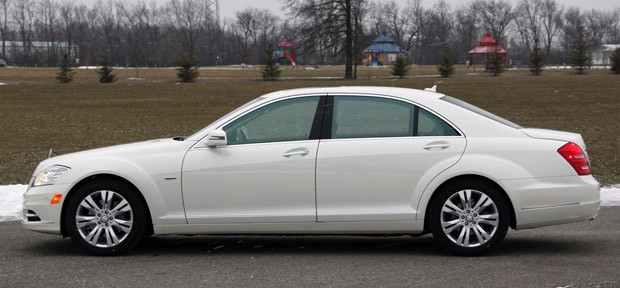
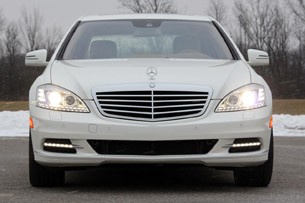
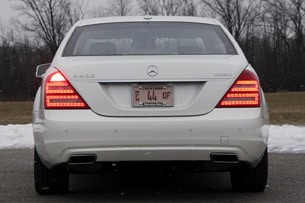
Inside, the S-Class remains largely unchanged from 2009, but that's not really a bad thing. The extended instrument hood spans the distance from the driver's side A-pillar to the center of the dash and contains the main instrument cluster along with the center navigation screen. Like all current generation S-Class models, the fuel gauge and tachometer flank a large LCD that provides a virtual analog speedometer. The center stack and console have a clean, uncluttered appearance with only a single row of switches just below the center vents and another handful on either side of the COMAND knob.
COMAND, you'll recall, is Mercedes' answer to BMW's iDrive and it allows the driver to traverse a myriad of control menus through the same central display used for the navigation system. While we laud automakers' efforts to reduce dashboard clutter, we remain unconvinced that such all-in-one mechanisms are necessarily the best solution to every problem. Some are better, some are worse and Mercedes' solution lands somewhere in between. Most functions are relatively pain-free, but making adjustments to the air conditioning or iPod draws too much of the driver's attention away from the road. Entering a destination into the navigation system also requires a few too many steps and can't be operated when the vehicle is in motion.
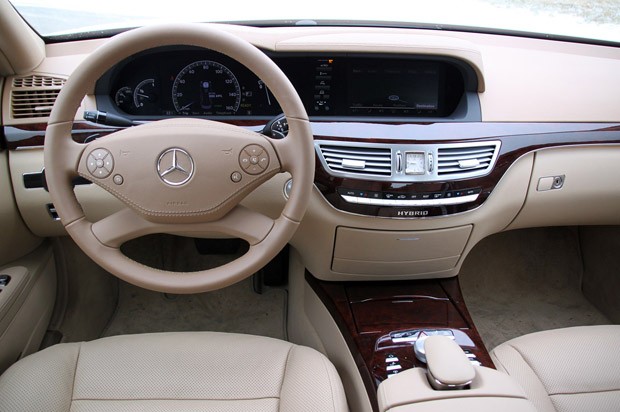
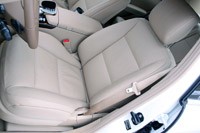
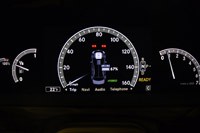
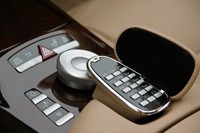
Currently, only the long-wheelbase form of the S-Class is available in the U.S. market. The immense dimensions pays big dividends on the inside, as first-class pricing brings with it first-class leg- and head room for both front and rear seat passengers. While the rear seat is wide enough to accommodate a third passenger, that rider won't be nearly as comfortable as his/her companions thanks to the large transmission tunnel and hard back cushion on the center armrest. Rear passengers get just as much control over their climate as those in front thanks to vents in the center console, B-pillars and under the front seats. What they don't get is temperature control, which is managed by the center stack between the driver and passenger.
Speaking of the front thrones, the Drive-Dynamic seats (part of the Premium Package) are equipped with a full range of techno-gimmickry cooked up by Stuttgart's pleasure-seeking engineers. The perforated leather upholstery allows chilled air to penetrate on hot days and heating elements will keep backsides warm during frigid winters. For longer journeys, the seats offer a massage mechanism that is activated through the COMAND system. Our S400 tester featured the same groping seats that we didn't care for on the S63 a couple of years ago and we found them to be just as disconcerting on the E63. The system moves the side bolsters in response to lateral acceleration forces in order to keep the driver in front of the wheel. We found them more distracting than helpful, but the system does allow the bolsters to be adjusted inward and outward, making the seats customizable for different frames and thicknesses.
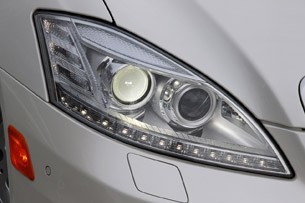
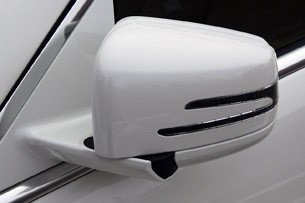
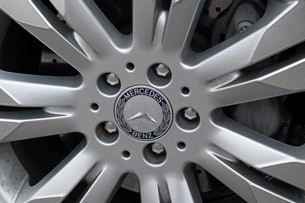
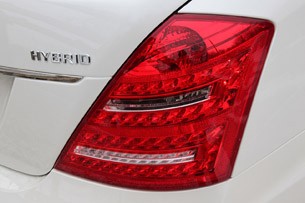
The S400 is one of two series production hybrids that Mercedes has launched in the last few months and the first to use a newly developed mild-hybrid system. Shortly after signing up for the joint development program with General Motors that brought the two-mode hybrid system from buses to light-duty vehicles, Daimler and BMW formed a second hybrid partnership. Unlike the expensive and complex two-mode strong-hybrid system, the new program was meant to create a modular mild-hybrid system that could be applied to a broader range of vehicles at a lower cost. In spite of that goal, both of the German luxury brands chose to debut the system in their flagship platforms: the 7 Series from Munich and the S-class from Stuttgart.
Mercedes-Benz and BMW are by no means the first automakers to introduce large and expensive luxury hybrids. That honor falls to Lexus and its LS600h. The LS600h uses a hybrid system based on the same architecture as the one in the Toyota Prius, but scaled up to the size and performance demands of a 5,000-pound luxury cruiser. The new German hybrid system is actually closer in principle to the one used by Honda for its Integrated Motor Assist (IMA), consisting of a disc-shaped 15 kilowatt motor/generator sandwiched between the engine's flywheel and the transmission torque converter.
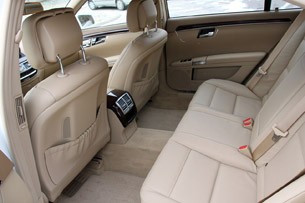
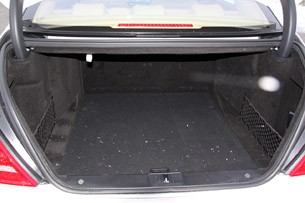
Like IMA, this setup is incapable of driving the vehicle on electric power alone. What it can do is provide automatic start-stop capability along with electric assist during acceleration. When the gas pedal is released, the hybrid motor/generator also provides regenerative braking. In fact, Mercedes has implemented some novel ideas to reduce parasitic losses and improve overall efficiency. The S400 has neither a conventional alternator nor a 12V starter battery. Instead, the hybrid motor/generator provides all the electrical power for the vehicle and the S400 is also the first mass-produced hybrid to use a lithium ion battery.
The battery (supplied by Continental Automotive Systems) is about the same size as a conventional lead acid unit and it actually resides under the hood where the starter battery would normally be. Thus, it doesn't eat up any of the space in the trunk, leaving the full 16 cubic feet for luggage stowing/golf club transport. A transformer is integrated into the power electronics to bring the 120 volts of the battery down to 12 volts for the vehicle's electrical system.
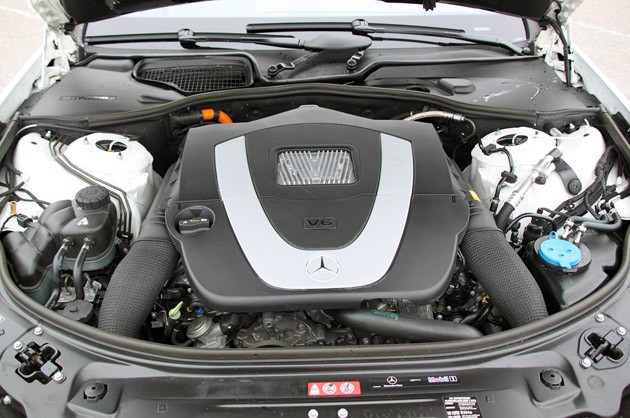
While the S400 is no Prius, Mercedes-Benz has definitely biased its performance more towards efficiency than BMW has with its hybrid 7 Series. Where BMW went with an uprated 440 horsepower twin-turbo V8, Mercedes paired the hybrid drive with its 3.5-liter V6. The V6's valve control has been modified to run on an Atkinson cycle with the intake valve closing later for better efficiency. The electric motor compensates for the torque deficiency of the Atkinson cycle thanks to its instant torque. The modular system is also designed to work with conventional automatic transmissions rather than requiring a dedicated torque-split gearbox like the two-mode or Toyota system. In the S400, Mercedes is using the same seven-speed automatic found in most other S-Class models.
The S400 obviously isn't as quick off the line as the BMW, but it's remarkably more efficient and drives more smoothly than the ActiveHybrid 7. The engine shut-off and restart in the Benz is almost seamless – in distinct contrast to the rough starts we experienced with the 7 Series. Another important distinction is the with this car's steering. BMW opted to retain the standard hydraulic assist used on non-hybrid 7s. When that gas-electric luxo-barge is stopped with the engine off, tugging the wheel immediately triggers a re-start in order to provide steering assist. On the contrary, Mercedes uses electric assist to allow the engine to stay off until the driver releases the brake pedal.
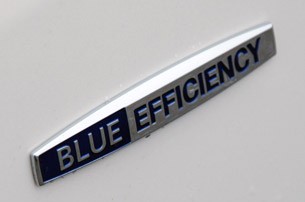
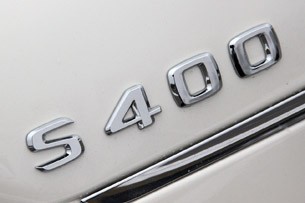
Unfortunately, the downside is that the S400's steering doesn't feel nearly as connected – it actually doesn't provide much feedback at all. Like the S63, the S400 is largely devoid of sensation, although it doesn't feel as over-boosted and disconnected as the higher performance model did when we drove it last. Aside from the steering, the handling of the S400 is commendable for such a large car, but enthusiastic drivers will definitely feel more at home in a BMW or a smaller Benz.
So what does this all mean at the pump? Simply put, the mileage is "okay." But when you consider the size and mass of the S400, it's commendable. The EPA rates the S400 at 19/26/21 mpg city/highway/combined, and during our testing we averaged around 22 mpg. The closest non-hybrid S currently offered in the U.S. is the V8 S550 which is rated at 15/23/18. That's not a huge difference, but we suspect the real world numbers for the V8 machine will be closer to the 15-17 mpg range for the average driver. The other factor to consider is that the relationship between fuel consumption and mileage is reciprocal. That means the three mpg difference from 18 to 21 will yield savings of about $264 (based on $2.75/gallon and 12,000 miles) while going from 30 to 33 mpg would only save $108.
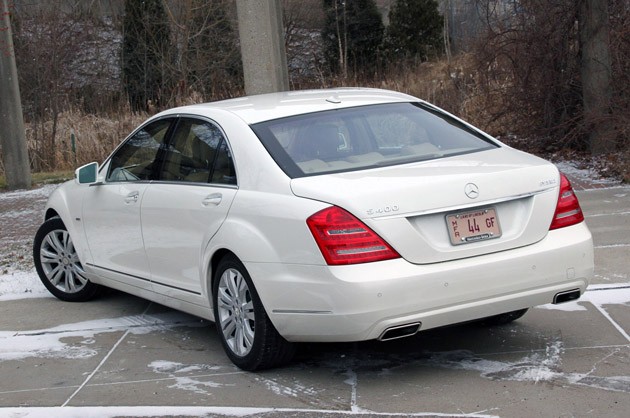
Which brings us back to the original question: What's the point of a $94,570 hybrid luxury sedan? In short, there probably isn't one. However, Mercedes-Benz is not immune to political and regulatory realities, nor to the image-conscious wishes of Hollywood's rich (we hear that the S400 is selling well among high-profile clients who are trading in their Toyotas). Over the next several years, the Germans – like every other automaker – will have to meet ever-tightening efficiency and emissions mandates both here and in Europe. The S400 is a first step. We'll see variations of this hybrid architecture propagate throughout the product lineup so that the company has something to offer customers who demand a cleaner ride without giving up all the goodies they expect in a Benz. If you absolutely must own a luxury vehicle with a hybrid badge on the back, we feel that this is a better implementation of the same hybrid technology than the BMW ActiveHybrid 7. However, what the S400 makes up for in refinement, it loses as a driver's vehicle – something most S-Class shoppers typically aren't interested in to begin with. But if you're looking for something sexier than a Prius and more conventional and luxurious than a Tesla, the S400 is an acceptable 'tweener, even if we can't necessarily figure out who it's for.
Photos Copyright ©2010 Sam Abuelsamid / Weblogs, Inc.
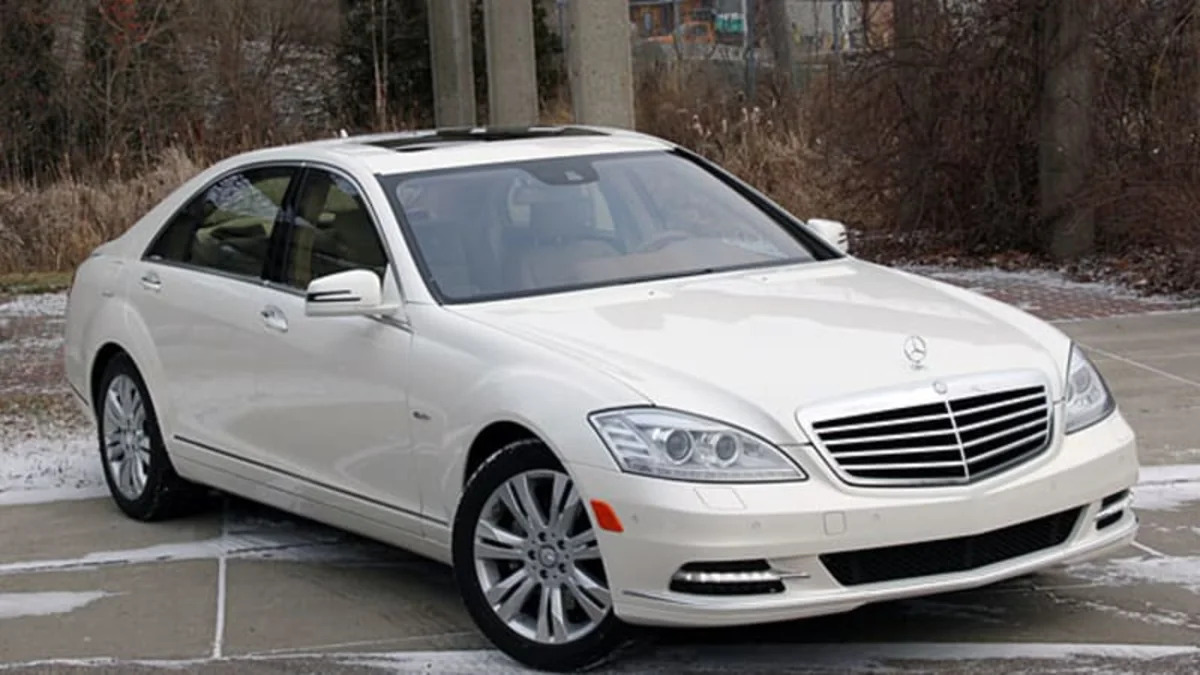
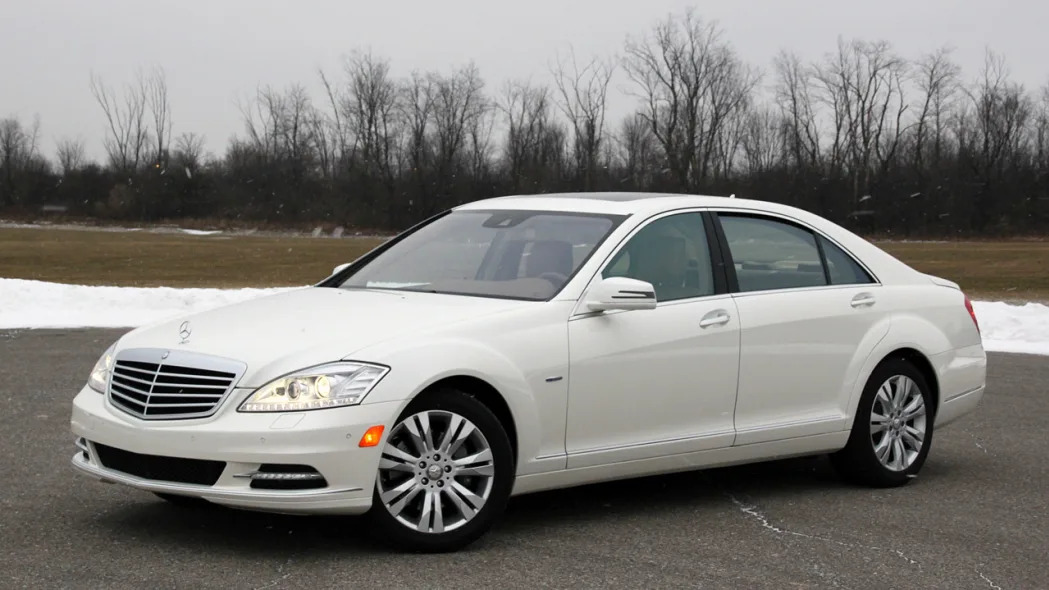

Sign in to post
Please sign in to leave a comment.
Continue